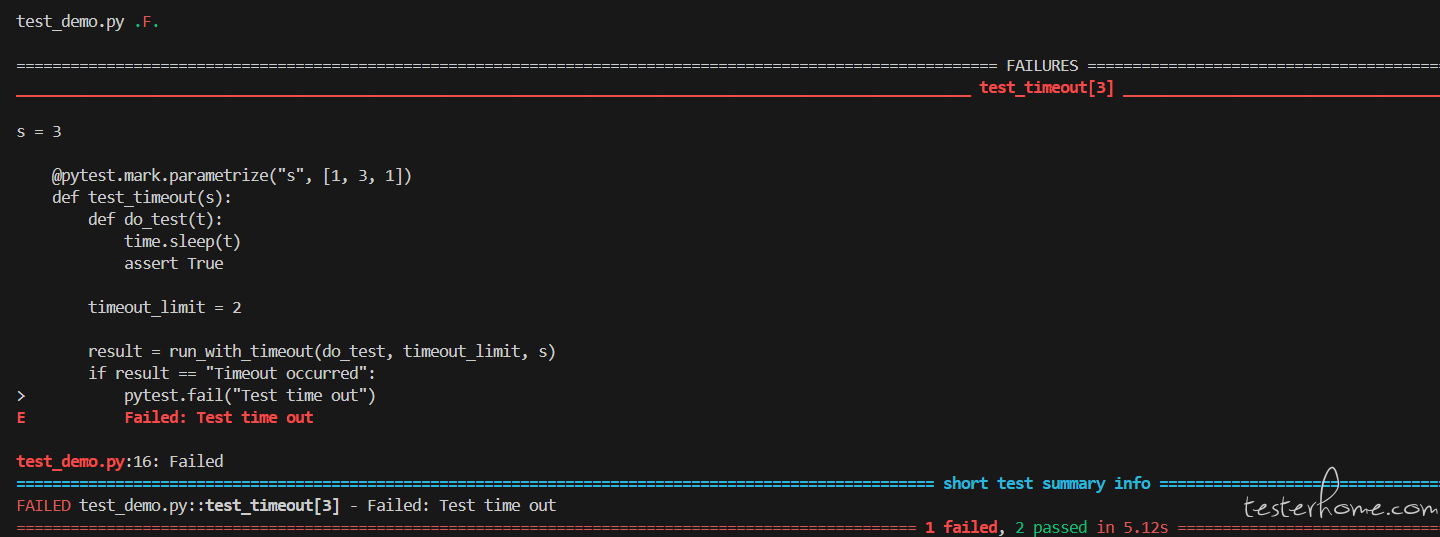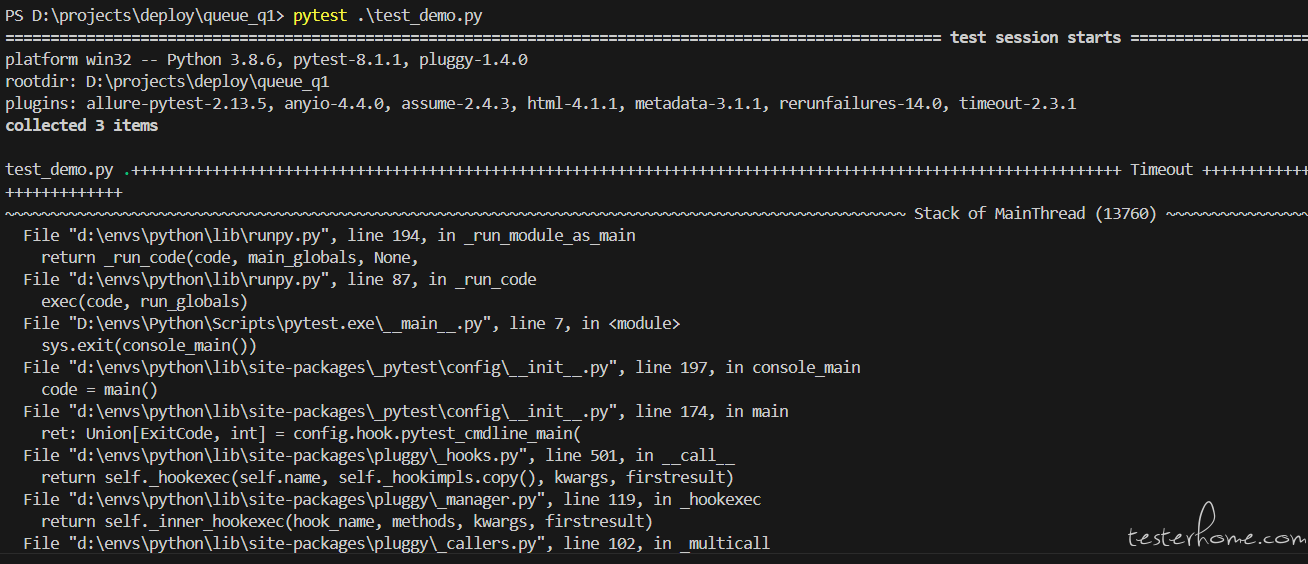-
0 个赞 / 4 条回复
-
【上海】[saas 医药公司] - 自动化测试工程师 at 2025年12月22日
-
Mocker-api 一款基于 python 编写的极简 http server 工具 at 2024年08月07日
这玩意我也写过一个,看起来差不多,写完就撂那儿了......
https://github.com/zhaixuwen/simple-mock -
【求助】如何捕获 pytest parametrize 中的 timeout 异常 at 2024年08月06日
ChatGPT 给出了个方案,我整合起来代码如下。这样的确可以捕获到 Timeout 异常,只是结合到业务场景中略显复杂,如果有简洁的方案就更好了
import time import pytest from concurrent.futures import ThreadPoolExecutor, TimeoutError as FuturesTimeoutError @ pytest.mark.parametrize("s", [1, 3, 1]) def test_timeout(s): def do_test(t): time.sleep(t) assert True timeout_limit = 2 result = run_with_timeout(do_test, timeout_limit, s) if result == "Timeout occurred": pytest.fail("Test time out") def run_with_timeout(func, timeout, *args, **kwargs): with ThreadPoolExecutor(max_workers=1) as executor: try: future = executor.submit(func, *args, **kwargs) return future.result(timeout=timeout) except FuturesTimeoutError: return "Timeout occurred"
-
【求助】如何捕获 pytest parametrize 中的 timeout 异常 at 2024年08月06日
感谢你的回复,我尝试修改代码,将 parametrize 放在 timeout 上面,仍无法捕获到 Timeout 异常
@ pytest.mark.parametrize("s", [1, 3, 1]) @ pytest.mark.timeout(2) def test_timeout(s): try: do_test(s) except Exception as e: print(e) pytest.fail('Test timeout!') def do_test(t): time.sleep(t) assert True
-
关于接口自动化请教一些问题 at 2023年04月21日
根据我目前的工作情况回答下:
1、大多数是按照日构建,少部分会按小时或分钟构建,相当于承担了一部分监控职能
2、接口自动化发现的问题其实很少,要么是服务挂了,要么是响应的内容发生了变动
3、如果已知接口有变动,会提交做维护,大多是构建失败的时候人工确认再调整 -
MTSC 2021 上海大会门票 at 2021年02月09日
终于来了